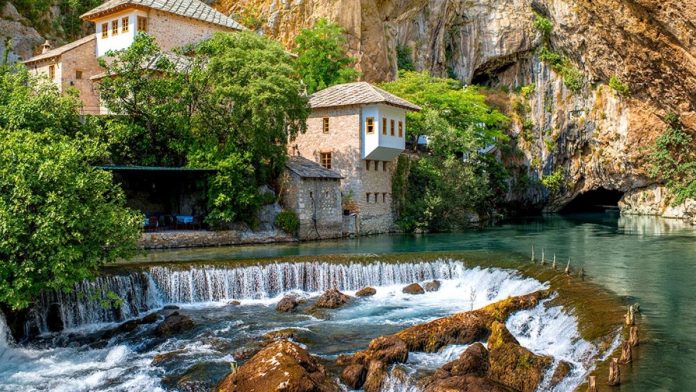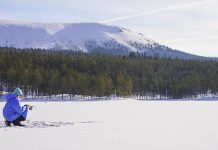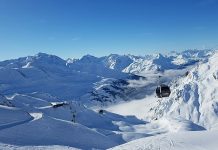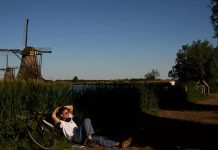Keen to flee the same old holiday hotspots? Slower, more thoughtful travel experiences await in Eastern Europe.
Two years ago I spent every week wandering Montenegro’s mountainous hinterland. Quite simply, it was spectacular.
That’s the thing about Europe: for all the favored resorts along the Mediterranean there are as many other special places to be discovered tucked a bit of bit further off the same old tourist routes.
Where Europe’s travel hotspots are grappling with the consequences of overtourism, these growing destinations have a novel probability to administer increasing visitor numbers so that they don’t reach the identical tipping point.
How we explore Europe now – in a way that works for local people and nature – will help shape its future. Listed here are five places to try.
‘Moments of small pleasure’ in Bosnia and Herzegovina
“There’s a less hurried lifestyle in Bosnia,” says Emma Heywood of Balkans-based travel company Undiscovered Balkans. “Isn’t that what holidays are all about? Learning to embrace the ‘ćejf’ (cheyf) as Bosnians call it: those moments of small pleasures.”
And small pleasures reign here. The joys of rafting on the icy waters of the Neretva River – a few of the most effective rafting on the planet enthuses Emma – or the blissful silence on a hike through the spectacular Sutjeska National Park. Ottoman-era architecture and a majority-Muslim population mean there’s plenty for cultural travellers in addition to energetic ones.
There are poignant reminders of its recent past, too. 2025 marks 30 years for the reason that end of the Bosnian War and its influence lingers. Emma adds, “It’s raw, real and breathtakingly beautiful. You’ll leave Bosnia with complete admiration for the overwhelming resilience and humour of its people.”
Learn how to do it: Take the train. A two-week round trip by rail and ferry from London St Pancras takes you to Mostar and Sarajevo via the unique ‘city of caves’ of Matera in Italy, and Albania on the way in which. Then on the way in which back stop off in Montenegro and Zagreb in Croatia.
From wild wolves to its communist history, Romania is a world of contrast
“Wildlife watching and birdwatching are two of my favourite things to do – you would say I’m on holiday on a regular basis!” says Simona Muneanu of nature travel company, Absolute Carpathian. Simona’s love of her home country is infectious.
“We’ve got the oldest mountains and the most recent lands” Simona continues, referring to the Carpathian Mountains and the sandbanks being consistently formed on the mouths of channels within the Danube Delta. The latter is Europe’s largest wetland, and with over 300 species, among the best places to go birdwatching on the continent.
For Simona, the contrast is what makes Romania so special. “Lots of my guests say it’s like a magical step back in time combined with high speed web.”
Expect old versus recent: mountains so wild they’re a stronghold for wolves and brown bears that act as a backdrop to communist-styled Black Sea resorts.
Learn how to do it: Select a nature-based trip that helps Romania preserve its unique big predator habitats. Bear watching or wolf-tracking tours with Simona use locally-owned accommodations and work with wildlife researchers within the Carpathian Mountains to evaluate the impact tourism is having there.
Hear old tales while tucking into traditional cuisine and wine in Georgia
Georgia’s appeal goes well beyond the towering Caucasus Mountains – the true draw is how natural beauty and human history intertwine.
Come to learn concerning the birthplace of wine (monks have been making it here for the reason that eighth Century), to hike within the Svaneti region within the shadow of ninth Century watchtowers, and to sample the stylish bars and restaurants tucked into the backdrop and balconies of Tbilisi Old Town.
Tatev Manucharyan, who runs Caucasus specialist Arara Tour sums it up nicely: “Sitting at a protracted table brimming with ‘khinkali’ (dumplings), ‘khachapuri’ (cheese-filled bread), and ‘mtsvadi’ (grilled meat), while a ‘tamada’ (toastmaster) leads toasts, is actually something special. It’s a moment that captures the essence of Georgia – warm, inviting, and deeply rooted in tradition.”
Learn how to do it: With a neighborhood guide who can tease out the long-told stories which are woven into the material of the land – and who knows the most effective Georgian sweets and where to search out them.
Cycle along quiet coastal paths and quaint towns within the Baltics
Want an alternate beach escape? Lithuania’s UNESCO-listed Curonian Spit has sand for miles. Prefer a winter city escape? Tallinn’s red-roofed Old Town is positively fairytale-like under a dusting of snow.
Fascinated by Cold War history? Soak up the Museum of the Occupation of Latvia in Riga. But what Estonia, Latvia and Lithuania are particularly sensible for is biking.
Miles of – mostly flat – cycling trails and coastal paths take you thru a mixture of open quiet countryside, old-growth forests, national parks, and historic cities. Low traffic roads and well-maintained cycle paths lend themselves to days of leisurely cycling.
Learn how to do it: Locally-run bike tours connect the three capital cities, via national parks, islands, and picnic lunches with local people.
Find your natural swimming spirit in Slovenia
With among the cleanest water on this planet, Slovenia was made for swimming. And there’s loads of it too. An unlimited network of lakes and rivers bely Slovenia’s relatively small size and make it one of the crucial water-rich countries in Europe. Travel here, and also you’re never removed from somewhere to take a dip.
Swimming spots just like the emerald-green Soča River or Lake Bled are beautiful – as is way of the remaining of the country. Designated as one in all Europe’s biodiversity hotspots, it has more Natura 2000 sites (areas protecting significant species and habitats) than some other EU nation and a government that’s seemingly taking environmental stewardship seriously.
Learn how to do it: Local guides will provide help to find the most effective and safest places to swim where you won’t disturb nature. This short trip features a swim across Lake Bled and Lake Bohinj in addition to a dip within the cavernous Kozjak Waterfall.
Sarah Faith is a senior values author at activist travel company, Responsible Travel.
Unlock the world’s wonders with unforgettable journeys tailored just for you! Whether you crave sun-kissed beaches, thrilling adventures, or rich cultural escapes, your dream destination awaits. Enjoy seamless travel with expert tips, exclusive deals, and handpicked experiences that Turn Every Trip into a lifetime memory.










